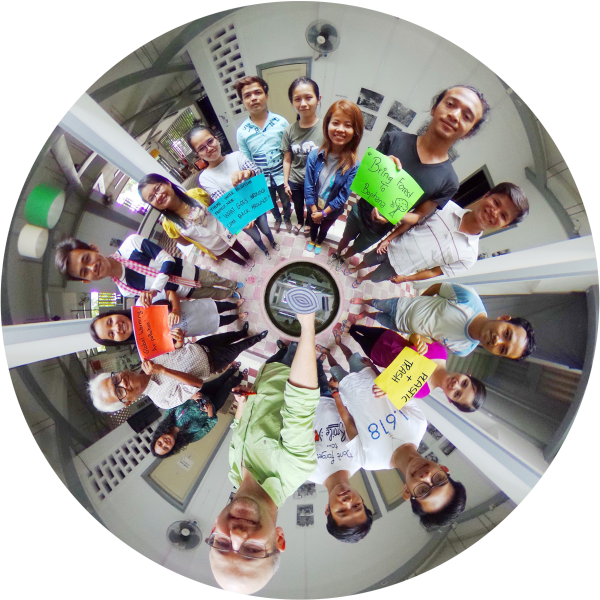As a representative from the United States, it was inspiring to see that addressing environmental issues is such a high priority among so many people in Cambodia. Leaders young and old are working hard with beautiful creativity to heal our world.
The American Arts Incubator – Cambodia Facebook page continues to be a vibrant hub for workshop participants, environmental activists, and media artists in Cambodia. The four teams are continuing their projects, launching their own social media campaigns, and are well on their way to Phase 2 project production. I am excited to be a long-distance advisor as their projects continue to grow. The 360 Ricoh Theta S camera and virtual reality (VR) goggles purchased for the workshop are being shared in an ongoing equipment pool for the groups. The installed solar electric system for the Bophana Audiovisual Resource Center continues to provide power each day for screens to show artwork and fans to keep everyone cool. It is inspiring to know that when the sun is setting here in Philadelphia, it is rising over the solar panel in Phnom Penh.
I feel honored to have led the Incubator at Bophana Center in Cambodia and thankful for all the support and enthusiasm of the Bophana Center staff. I was most impressed by the dedication and commitment of the participants. The teams worked really well together considering the strain of creative deadlines. Fortunately, there were no breakdowns or ego battles in the busy final days. A real sense of camaraderie developed among the teams as well as across the whole group. The final exhibition was a tremendous success and groups of visitors continued to come in for the month-long duration of the exhibit.

One of the installations created by the Plastic Team featured a statue of the mythological mermaid, Suvannamaccha, made out of plastic bottles and newspaper headlines. The statue had trigger images of sickly fish and some fruit. When looked at through the augmented reality (AR) app, the fish and fruit disappeared to reveal an image of the mermaid. The installation’s purpose was to warn us of a future where ocean life disappears because of trash and other pollutants.
Usually, AR projects are about adding a new layer of information on top of the trigger image. This was a learning moment for me as the participants expanded my horizons to look at the technology differently. Their project conveyed how adding something can have a subtractive effect. Perhaps this approach can provide new and unique solutions to the seemingly futile pursuit of environmental sustainability.

While a couple of workshop participants had experience with virtual reality, none of them had ever experienced an augmented reality project. It was powerful to realize that in Cambodia, their first experiences with AR and VR were as art projects and not simply commercial applications for a corporate product. During the American Arts Incubator workshop, I watched them realize their potential as makers and innovators, not merely as passive consumers. They are now at the forefront of developing the aesthetics of these new mediums.
The one exciting potential of new media technologies is that peoples’ use of it has not been trained by a lifetime of cultural influence. Through the workshop, participants were able have a more pure and personally pioneering experience in imagining the potential for AR and VR as tools for art-making and creating social change.


